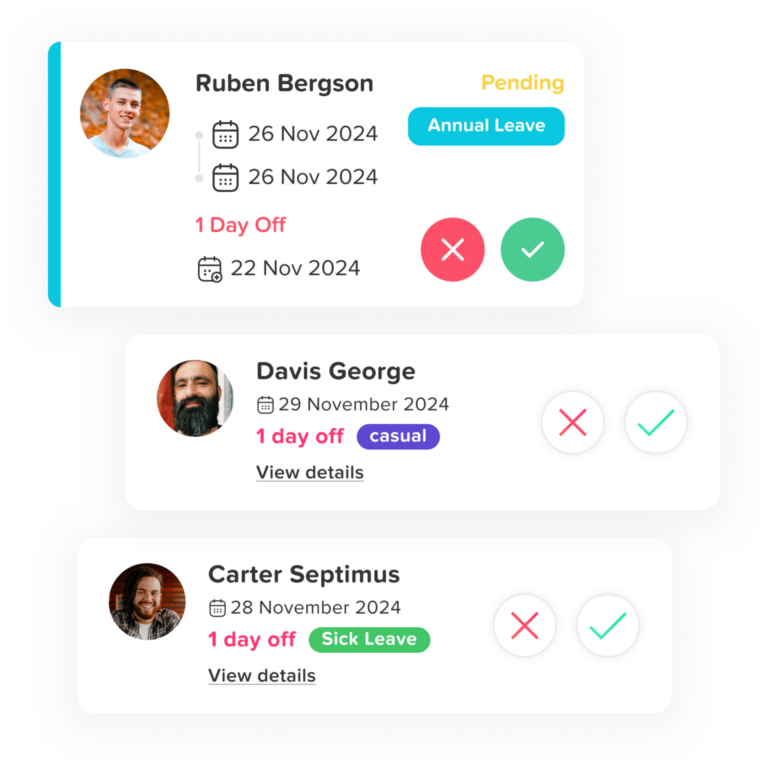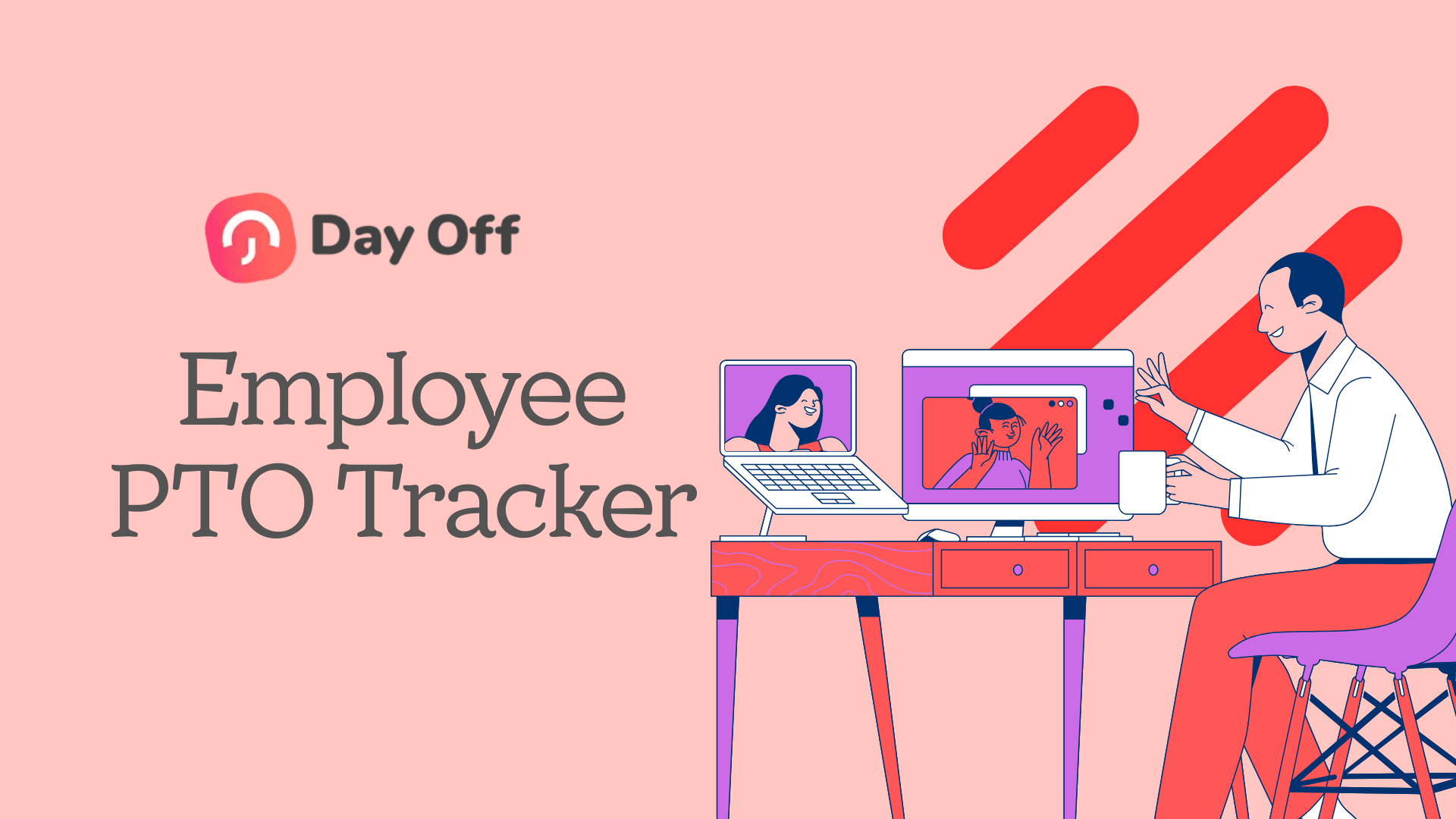Table of Contents
ToggleManaging employee time off is a crucial element of maintaining a healthy workplace. Paid Time Off (PTO) policies have evolved from mere perks to strategic tools that enhance employee well-being, satisfaction, and productivity. However, as organizations grow and adapt to changes in work environments, whether fully remote, hybrid, or traditional office settings, tracking PTO efficiently becomes increasingly complex. This is where Employee PTO Tracker comes into play.
Whether you’re running a small business with a few employees or a large corporation with global operations, an effective PTO tracking system can streamline processes, prevent scheduling conflicts, ensure compliance with labor laws, and ultimately improve the overall employee experience. In this detailed guide, we’ll explore everything you need to know about employee PTO tracker: what they are, why they’re important, and how to choose the right one for your organization.
What is an Employee PTO Tracker?
An Employee PTO Tracker is a tool, typically in the form of software, that helps companies efficiently monitor and manage their employees’ paid time off. It automates the process of tracking vacation days, sick leave, holidays, parental leave, and other types of leave, giving both employers and employees real-time visibility into available balances, approvals, and accruals.
Rather than relying on cumbersome spreadsheets or manual entries, a robust PTO tracker functions as a central hub that integrates seamlessly with payroll, scheduling, and HR systems. This integration ensures that everyone is on the same page when it comes to time-off policies, reduces administrative overhead, and minimizes the risk of errors or miscommunications.
The Importance of an Effective PTO Tracking System
Implementing an efficient PTO tracking system offers numerous benefits for both employees and employers. Here’s a closer look at why having a reliable system in place is crucial:
Improves Employee Satisfaction
Transparency: Employees have clear visibility into their PTO balances, making them feel more in control of their time off, which boosts morale and job satisfaction.
Empowerment: When employees can easily request time off and know their balances, they feel more valued and respected. This contributes to higher engagement levels and loyalty.
Enhances Operational Efficiency
Automation: Manual tracking through spreadsheets or email chains is prone to errors, delays, and miscommunication. Automation saves time, reduces the risk of mistakes, and streamlines processes.
Team Visibility: Managers gain an at-a-glance view of team availability, allowing them to plan better and avoid staffing shortages, especially during peak vacation periods or busy seasons.
Ensures Compliance with Labor Laws
Legal Compliance: PTO regulations vary by state, country, and industry. Automated systems help businesses stay compliant with local labor laws regarding vacation time, sick leave, and family leave.
Audit Trails: PTO trackers provide a comprehensive audit trail, which can protect companies in case of disputes or compliance checks.
Supports Data-Driven Decision Making
Analytics: A PTO tracker provides valuable insights into employee attendance patterns, helping HR teams identify trends like burnout, absenteeism, or underutilization of PTO.
Policy Adjustments: Data can be used to adjust policies, optimize workforce planning, and enhance employee well-being by encouraging employees to take the time they need to recharge.
Benefits of Automating PTO Tracking
Investing in an automated PTO tracking system can revolutionize how your organization manages time off. Here are some compelling benefits:
Streamlined Administrative Processes
Automating PTO management eliminates the need for manual calculations, paperwork, and tedious data entry, significantly reducing the risk of human errors. By freeing up HR staff from repetitive administrative tasks, they can focus on more strategic, value-driven initiatives, such as talent development and employee engagement.
Enhanced Transparency and Fairness
An automated system ensures that all employee time-off requests, balances, and accruals are accurately tracked and recorded. This level of transparency prevents misunderstandings or disputes over time-off balances, helping to foster a culture of trust and fairness. When employees see that PTO is handled consistently and equitably, it boosts their confidence in company policies.
Increased Flexibility for Remote and Hybrid Teams
With more organizations embracing remote and hybrid work models, having a cloud-based PTO tracker is essential. Employees can easily request leave, check their balances, and receive approvals from anywhere, at any time. Managers, in turn, gain a real-time view of team availability, making it easier to coordinate time off across distributed teams and avoid scheduling conflicts.
Improved Employee Morale and Retention
By simplifying the process of requesting and managing time off, automated PTO systems help employees take full advantage of their paid leave. This encourages a healthier work-life balance, reducing burnout and enhancing overall job satisfaction. When employees feel empowered to take time off and recharge, it leads to higher morale, greater productivity, and improved employee retention.
Optimized Workforce Planning
Automated PTO tracking provides valuable insights into employee leave patterns, enabling managers to anticipate staffing needs during busy seasons or critical projects. By leveraging real-time data, organizations can proactively adjust workloads, ensure adequate coverage, and maintain productivity, even during peak vacation periods.
Strengthened Compliance and Reporting
PTO regulations can vary widely by location, making compliance a complex challenge, especially for organizations operating in multiple regions. Automated systems help ensure compliance with local labor laws by tracking different leave types, carry-over policies, and accrual rules. Additionally, they generate detailed reports that can serve as an audit trail, protecting your company in case of compliance checks or disputes.
By investing in an automated PTO tracking system, your organization can not only streamline operations but also foster a supportive, transparent, and engaging workplace culture that values employees’ well-being.
Top PTO Tracking Software Solutions in 2024

Finding the right PTO tracking tool can significantly enhance your company’s time-off management, boost productivity, and improve employee satisfaction. Below are some of the best PTO tracking solutions to consider in 2024, based on user reviews, industry standards, and feature sets:
Day Off:
A highly intuitive and user-friendly PTO tracking solution, Day Off is designed to simplify the process of managing employee leave. It offers features such as automated accrual tracking, a seamless approval workflow, and mobile accessibility, making it an excellent fit for organizations of all sizes. Day Off’s straightforward interface ensures that both employees and managers can efficiently request, approve, and monitor time off.
BambooHR:
BambooHR is a comprehensive HR platform with integrated PTO tracking capabilities. It allows small to medium-sized businesses to efficiently manage employee leave, automate accruals, and generate detailed reports. With features like self-service portals and calendar integration, BambooHR simplifies time-off requests while providing managers with valuable workforce insights.
Gusto:
Known for its seamless integration with payroll and benefits administration, Gusto is ideal for startups and small businesses. It provides a user-friendly PTO management feature that automates leave tracking and approvals. Employees can easily request time off through Gusto’s self-service portal, while managers gain visibility into team availability to plan for adequate staffing.
Zenefits:
Zenefits offers a robust PTO tracking system combined with benefits management and compliance features. Its flexible settings accommodate various accrual rules, carry-over policies, and leave types. Zenefits is especially beneficial for companies that need a comprehensive HR solution with integrated time-off management.
ADP Workforce Now:
For larger organizations with complex HR needs, ADP Workforce Now offers powerful PTO tracking, advanced reporting, and compliance support. It integrates seamlessly with payroll, ensuring accurate processing of leave balances. The platform’s scalability makes it suitable for enterprises looking to optimize their PTO management while staying compliant with labor laws.
Timetastic:
A lightweight, cost-effective tool, Timetastic is perfect for small to medium-sized businesses seeking a straightforward way to manage employee leave. Its easy-to-use interface simplifies PTO requests, notifications, and approvals. Timetastic also offers calendar integration to help managers avoid scheduling conflicts.
FAQs
What’s the difference between PTO and vacation leave?
PTO (Paid Time Off) is a flexible policy that includes vacation days, sick leave, personal days, and sometimes holidays, while vacation leave is specifically used for taking time off for personal leisure.
Can a PTO tracker help prevent employee burnout?
Yes, by tracking time-off usage, employers can ensure employees are taking their allotted breaks, reducing the risk of burnout and enhancing well-being.
How much does a PTO tracking system cost?
Costs can vary widely based on features and company size, ranging from free tools with basic capabilities to advanced solutions that may cost several hundred dollars per month for enterprise-level features.
Can PTO trackers handle compliance with different countries’ labor laws?
Many advanced PTO tracking systems allow for customization to meet different countries’ regulations, ensuring compliance with various labor laws.
What are the benefits of integrating PTO software with payroll systems?
Integration with payroll ensures that approved time off is accurately reflected in pay calculations, reduces administrative work, and minimizes errors related to leave balances.
Is a mobile-friendly PTO tracker necessary for remote teams?
Absolutely. A mobile-friendly PTO tracker allows remote employees to easily request and manage leave, while managers can approve requests on the go, ensuring flexibility in hybrid or fully remote work environments.
Can employees carry over unused PTO to the next year?
This depends on your company’s policy. Many PTO trackers allow you to configure carry-over rules to align with your organization’s leave policies.
How do PTO trackers support data-driven decision-making?
PTO trackers provide analytics that reveals leave patterns, helping managers optimize staffing, improve workforce planning, and adjust PTO policies to enhance employee satisfaction.
By investing in a reliable PTO tracking solution, companies can not only streamline their time-off management processes but also cultivate a positive, transparent workplace that values employee well-being.
Conclusion
Effectively managing employee time off is essential for creating a healthy, productive workplace. A well-chosen PTO tracking system can streamline administrative processes, boost transparency, and enhance overall employee satisfaction. By automating time-off requests, tracking accruals, and ensuring compliance with labor laws, organizations can reduce operational burdens while empowering employees to manage their own leave. Whether you are a small business or a large enterprise, investing in the right PTO tracker can foster a more engaged and motivated workforce, leading to better retention and improved productivity. As work environments continue to evolve, a reliable PTO system is a crucial tool for maintaining both operational efficiency and employee well-being.
